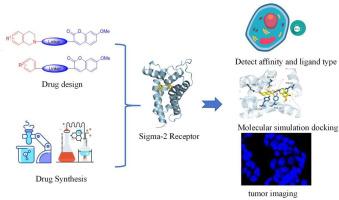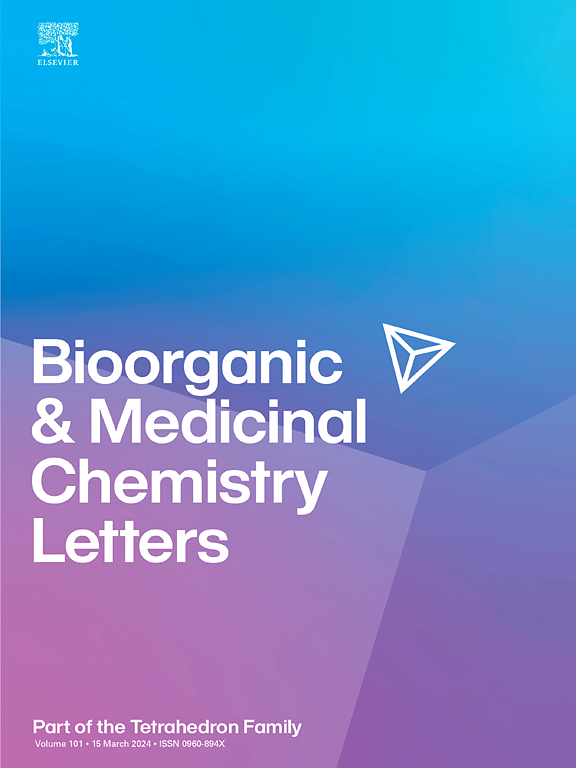Synthesis and functional evaluation of tetrahydroisoquinoline and polysubstituted benzylamine derivatives as sigma-2 receptor-targeted small-molecule probes
IF 2.2
4区 医学
Q3 CHEMISTRY, MEDICINAL
引用次数: 0
Abstract
The sigma-2 receptor has been identified as a marker of abnormal tumor proliferation. Novel sigma-2 small molecule probes have been developed to assist in localizing tumor sites, tracking in vivo tumor cell proliferation and migration, and facilitating cancer diagnosis and treatment. A series of tetrahydroisoquinoline- and polysubstituted benzylamine-based sigma-2 small molecule probes were synthesized, and compounds 6–8 were found to exhibit moderate to high affinity and selectivity for sigma-2 receptors, with Ki values ranging from 7.8 to 53.2 nM. Functional analysis confirmed that the three active compounds act as sigma-2 receptor antagonists. Lower cytotoxicity was observed for compounds 6–8, with no significant or only weak cytotoxic effects detected in the MCF-7 cell line. In the tumor cell fluorescence imaging experiment, it could be clearly observed from the merged images that fluorescence was localized within MCF-7 cells, and target compounds 6–8 were able to enter target cells and exhibit obvious fluorescence. Among them, the fluorescence of compound 6 was the most distinct.

四氢异喹啉和多取代苄胺衍生物作为sigma-2受体靶向小分子探针的合成及功能评价。
sigma-2受体已被确定为异常肿瘤增殖的标志。新型sigma-2小分子探针被开发出来,用于帮助定位肿瘤部位,跟踪体内肿瘤细胞的增殖和迁移,促进癌症的诊断和治疗。合成了一系列基于四氢异喹啉和多取代苄胺的sigma-2小分子探针,化合物6-8对sigma-2受体具有中高亲和力和选择性,Ki值在7.8 ~ 53.2 nM之间。功能分析证实这三种活性化合物具有sigma-2受体拮抗剂的作用。化合物6-8的细胞毒性较低,在MCF-7细胞系中没有明显或仅微弱的细胞毒性作用。在肿瘤细胞荧光成像实验中,从合并的图像中可以清楚地观察到荧光定位在MCF-7细胞内,靶化合物6-8能够进入靶细胞并表现出明显的荧光。其中,化合物6的荧光最明显。
本文章由计算机程序翻译,如有差异,请以英文原文为准。
求助全文
约1分钟内获得全文
求助全文
来源期刊
CiteScore
5.70
自引率
3.70%
发文量
463
审稿时长
27 days
期刊介绍:
Bioorganic & Medicinal Chemistry Letters presents preliminary experimental or theoretical research results of outstanding significance and timeliness on all aspects of science at the interface of chemistry and biology and on major advances in drug design and development. The journal publishes articles in the form of communications reporting experimental or theoretical results of special interest, and strives to provide maximum dissemination to a large, international audience.

 求助内容:
求助内容: 应助结果提醒方式:
应助结果提醒方式:


